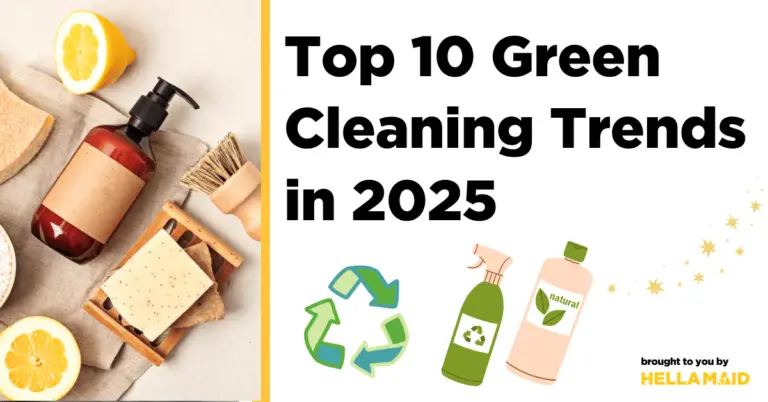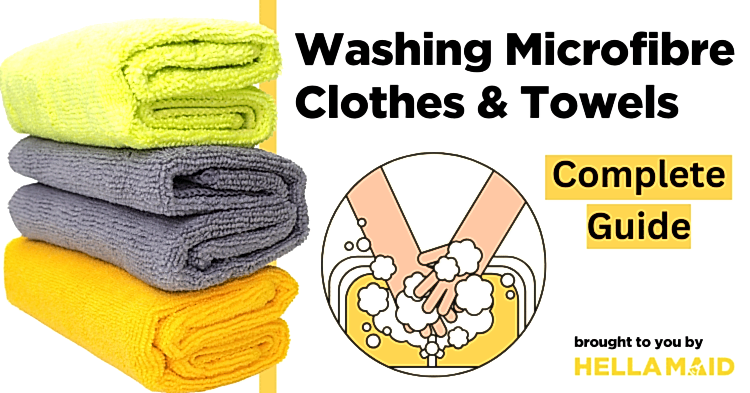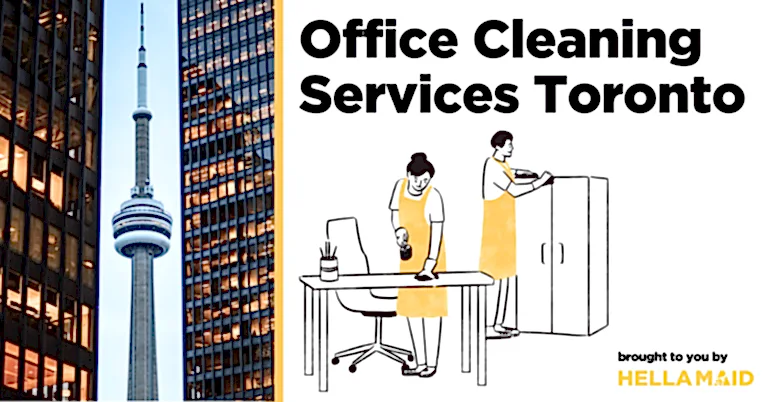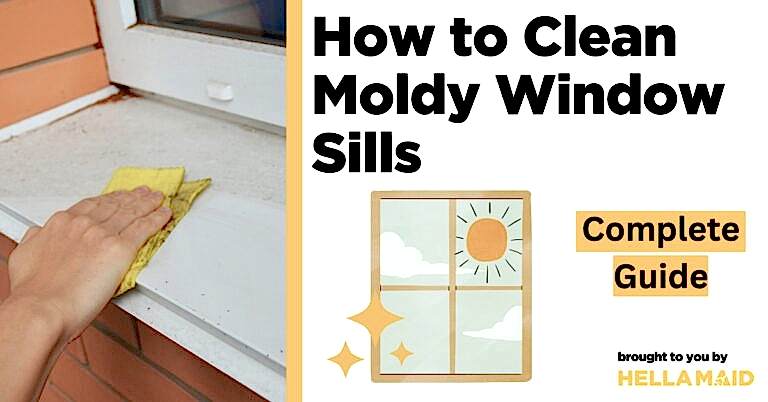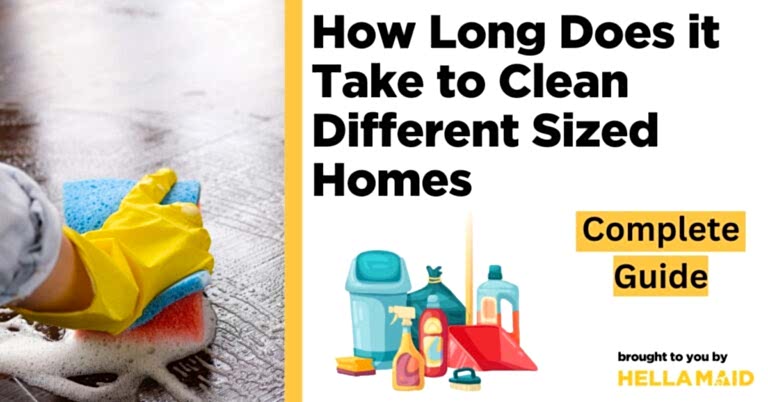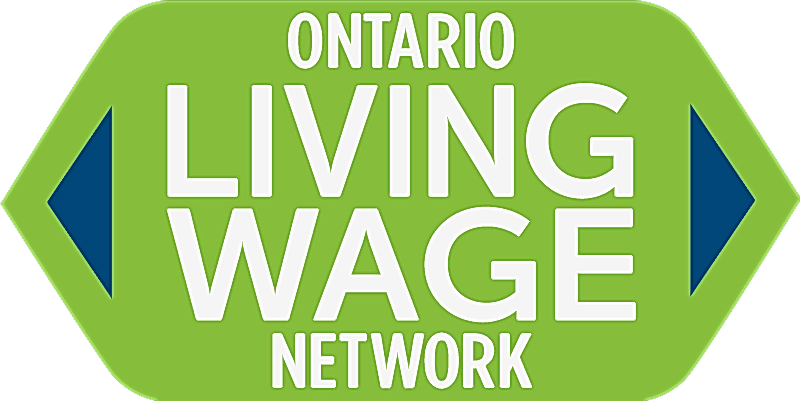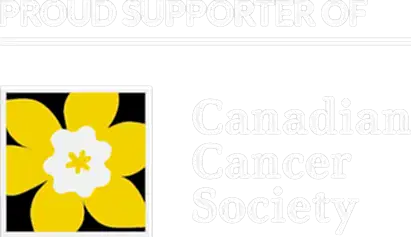As concerns about the environmental impact of traditional cleaning products continue to grow, more and more people are turning to green cleaning options. Green cleaning refers to the use of products and methods that are environmentally-friendly, non-toxic, and sustainable. In this article, we’ll explore the top trends in green cleaning for 2025.
Summary of Top 10 Trends for Green Cleaning in 2025:
- Use of natural, plant-based cleaning products
- Use of microfiber cleaning cloths and mop heads
- Greater adoption of sustainable cleaning methods
- More use of reusable cleaning bottles and containers
- Increased emphasis on transparency and eco-labeling in the cleaning industry
- Introduction of more smart home cleaning technologies
- Increased use of compostable cleaning tools
- Awareness and focus on biodegradable cleaning products
- Increased use of essential oils for natural fragrances
- Greater adoption of DIY cleaning solutions
Trend #1:
Increased use of natural, plant-based cleaning products
One of the biggest trends in green cleaning for 2025 is the use of natural, plant-based cleaning products. These products are made from ingredients derived from plants and other natural sources, and they’re often free from harsh chemicals and synthetic fragrances. Natural cleaning products are not only better for the environment, but they can also be gentler on skin and respiratory systems. Some popular natural green cleaning brands to look out for in 2025 include Seventh Generation, Method, and Ecover.
Trend #2:
Increased use of microfiber cleaning cloths and mop heads
Microfiber cleaning cloths and mop heads are another trend to watch in green cleaning. Made from ultra-fine fibers, microfiber cloths and mops are highly effective at trapping dirt, dust, and other debris. They can also be used with just water, making them a chemical-free cleaning option. In addition to their cleaning capabilities, microfiber cloths and mops are also durable and long-lasting, making them a sustainable choice. To get the most out of your microfiber cleaning tools, be sure to follow proper care instructions, such as washing them in warm water and avoiding fabric softeners.
Trend #3:
Increased adoption of sustainable cleaning methods
Sustainable cleaning methods, such as dry cleaning and steam cleaning, are also on the rise. Dry cleaning involves using dry cleaning pads or sponges to lift dirt and grime from surfaces, while steam cleaning uses hot water and steam to loosen and remove dirt. Both of these methods can be highly effective at cleaning a variety of surfaces and materials, and they have the added benefit of being chemical-free. If you’re looking to adopt more sustainable green cleaning practices in 2025, consider giving dry cleaning or steam cleaning a try.
Trend #4:
Increased use of reusable cleaning bottles and containers
Single-use plastics have long been a source of environmental concern, and the cleaning industry is no exception. In 2025, we can expect to see a continued shift towards the use of reusable cleaning bottles and containers. By switching to reusable containers, you can reduce your impact on the environment and save money in the long run. When making the switch to reusable containers, it’s important to properly label and store your cleaning products to prevent any accidental mix-ups or spills.
Trend #5:
Increased emphasis on transparency and eco-labeling in the cleaning industry
One trend to watch for in the green cleaning industry is the increased emphasis on transparency and eco-labeling. Many consumers are becoming more concerned about the ingredients and environmental impact of cleaning products, and they are seeking out products that are transparently labeled and certified by reputable organizations. To meet this demand, more and more cleaning companies are adopting eco-labeling systems and third-party certifications, such as the Environmental Protection Agency’s (EPA) Safer Choice program, to provide consumers with the information they need to make informed purchasing decisions.
Trend #6:
Increased use of smart home cleaning technologies
Smart home cleaning technologies, such as robotic vacuums and automatic dispensers for cleaning solutions, are also gaining popularity. These technologies can help to make cleaning more efficient and convenient, and they often use sensors and algorithms to navigate around your home and identify areas that need extra attention. Many smart home cleaning technologies are also equipped with features that help to conserve energy and reduce waste, making them a more sustainable choice.
Trend #7:
Increased use of compostable cleaning tools
Compostable cleaning tools, such as sponges and scrub brushes made from natural materials, are becoming more popular as people look for more environmentally-friendly options. These products can be composted after use, reducing the amount of waste that ends up in landfills. With the push for more recycling initiatives, compostable tools will definitely be on the rise for green cleaning in 2025.
Trend #8:
Increased focus on biodegradable cleaning products
Biodegradable cleaning products, which are made from natural ingredients that can break down into non-toxic substances, are also on the rise. These products are a more sustainable alternative to traditional cleaning products, as they don’t leave behind harmful residues or contribute to pollution.
Trend #9:
Increased use of essential oils for natural fragrances
Many people are turning to essential oils as a natural alternative to synthetic fragrances in cleaning products. Essential oils can add a pleasant aroma to cleaning products and also have natural antimicrobial properties. Some popular essential oils for cleaning include lemon, tea tree, and eucalyptus.
Trend #10:
Increased adoption of DIY cleaning solutions
DIY cleaning solutions, which are made from ingredients found in most households, are also becoming more popular as people look for more cost-effective and environmentally-friendly cleaning options. DIY cleaning solutions can be made from a variety of natural ingredients, such as vinegar, baking soda, and lemon juice, and they can be used to clean a variety of surfaces and materials.
In Summary, Green Cleaning will Shine in 2025
In conclusion, the green cleaning industry is constantly evolving, and 2025 is shaping up to be an exciting year for environmentally-friendly cleaning practices. Some of the top trends to watch for include the increased use of natural, plant-based cleaning products; microfiber cleaning cloths and mop heads; sustainable cleaning methods; and reusable bottles and containers. Other trends to keep an eye on include the increased focus on refillable cleaning products, smart home cleaning technologies, compostable cleaning tools, biodegradable cleaning products, essential oils for natural fragrances, and DIY cleaning solutions. By adopting these trends, you can help to reduce your environmental impact and create a healthier, more sustainable home.

